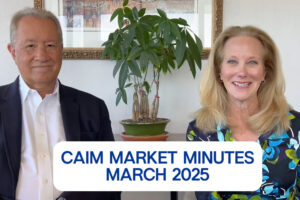[fusion_builder_container hundred_percent=”no” equal_height_columns=”no” menu_anchor=”” hide_on_mobile=”small-visibility,medium-visibility,large-visibility” class=”” id=”” background_color=”” background_image=”” background_position=”center center” background_repeat=”no-repeat” fade=”no” background_parallax=”none” parallax_speed=”0.3″ video_mp4=”” video_webm=”” video_ogv=”” video_url=”” video_aspect_ratio=”16:9″ video_loop=”yes” video_mute=”yes” overlay_color=”” video_preview_image=”” border_size=”” border_color=”” border_style=”solid” padding_top=”” padding_bottom=”” padding_left=”” padding_right=””][fusion_builder_row][fusion_builder_column type=”1_1″ layout=”1_1″ background_position=”left top” background_color=”” border_size=”” border_color=”” border_style=”solid” border_position=”all” spacing=”yes” background_image=”” background_repeat=”no-repeat” padding_top=”” padding_right=”” padding_bottom=”” padding_left=”” margin_top=”0px” margin_bottom=”0px” class=”” id=”” animation_type=”” animation_speed=”0.3″ animation_direction=”left” hide_on_mobile=”small-visibility,medium-visibility,large-visibility” center_content=”no” last=”no” min_height=”” hover_type=”none” link=””][fusion_text columns=”” column_min_width=”” column_spacing=”” rule_style=”default” rule_size=”” rule_color=”” hide_on_mobile=”small-visibility,medium-visibility,large-visibility” class=”” id=”” animation_type=”” animation_direction=”left” animation_speed=”0.3″ animation_offset=””]
|
|
Being an entrepreneur is one of the most amazing, as well as the most challenging, experiences I have ever had. As a colleague recently said, “It’s the toughest job you’ll ever love.” And is that ever true, what with having to be an expert on everything and working even when you’re not working (because you can’t stop thinking about your business!)
Warm regards,
Catherine Maniscalco Avery
CAIM specializes in creating and managing
customized and fully diversified investment portfolios for private investors.
|
|
Entrepreneurs at riskHEADLINES: Oct 27, 2005 — Small business owners not saving nearly enough
“Almost 19 million people are running micro-businesses in the U.S. but one in three have nothing saved for retirement.” The Clark Howard Show
“A 2006 Fidelity survey reveals 65% of small business owners believed that a 401(k) plan would help them save more for their own retirement, yet less than 20% of them had one.”
May 3, 2007 — Small Business Retirement Crisis on the Horizon
“Only 6 percent of those who work by themselves have a 401(k) plan. Meanwhile, more than half of all business owners polled (55 percent) said they never plan to retire, and a shocking number, 62 percent, have no exit plan at all.” AllBusiness.com
“2008 ShareBuilder Group survey showed more than 30% of small business owners said they plan on generating a substantial portion of their retirement funds from the sale of their businesses, a strategy that depends on whether anyone wants to buy their companies and for how much.”
Are you shocked? Does any of this sound like you?
WHAT I SEE
In working with a wide variety of clients over the years, I have found that it is the entrepreneurs who are most often operating under a false sense of security and failing to save for retirement. Instead of making use of the myriad saving vehicles out there, they plough all the money they earn right back into the business. I’ve had clients with multi million dollar businesses and less than $16,000 in retirement savings – and these are people for whom 65 or 70 is not far away! Common excuses include:
The fact is, as I’ve said many times before, as the sole proprietor of a business, you’ve got to PAY YOURSELF FIRST and start setting aside money for retirement. You’ve got to diversify out of your business, if you ever hope to retire comfortably. If you’re relying on selling your business – you don’t know what’s going to happen down the line, if the business will sell for the amount of money you need and when you want it to! THE GOOD NEWS
There is positive news, however. Thanks to recent legislation and a new breed of online 401 (k) plans, there are many retirement plans available to self employed individuals and small businesses. The key is picking the one(s) that is right for you.
SEP IRA – a SEP IRA allows you to save up to 25% of your compensation (20% of your self-employment income) for a maximum of $46,000 for tax year 2008 and $49,000 for tax year 2009. Contributions are tax-deductible, and SEP IRAs have low maintenance fees.
Simple IRA (salary deferral) – You can contribute up to $10,500 or 100% of compensation, whichever is less for 2008. For 2009 it’s $11,500 or 100%. If you’re 50+ as of Dec 31 there’s a ‘catch up’ contribution of $2,500 allowable for both years. Simple IRA (non-elective contribution) – You can contribute up to $4,600 limited to $230,000 in compensation for 2008 and $49,000 limited to $245,000 in compensation for 2009. Solo 401K – Similar to a SEP IRA, contributions max out at $46,000 for ’08 and $49,000 for ’09. However, unlike a SEP IRA, participants in a Solo-401K can contribute up to 100% of the first $15,000 of compensation or self-employment income, and an additional amount up to 25% of your compensation. This is important because it allows you to save substantially more than a SEP IRA, if your compensation is less than $220,000 per year. The best plan for you will depend on many factors, such as whether you have employees or not, how much you want to contribute each year, how much time you want to spend administering the plan, etc. Double check with your accountant for all these important details. So what are you waiting for? I’m happy to help you start saving. It’s never too late.
See you next month with more updates and news!
For those of you with questions, feel free to call me at 203.966.2712. Also please visit my website at www.catherineaveryinvest.com
Please pass along this newsletter to friends and family to spread the word! Please pass along this newsletter to friends and family to spread the word! |
[/fusion_text][/fusion_builder_column][/fusion_builder_row][/fusion_builder_container]


